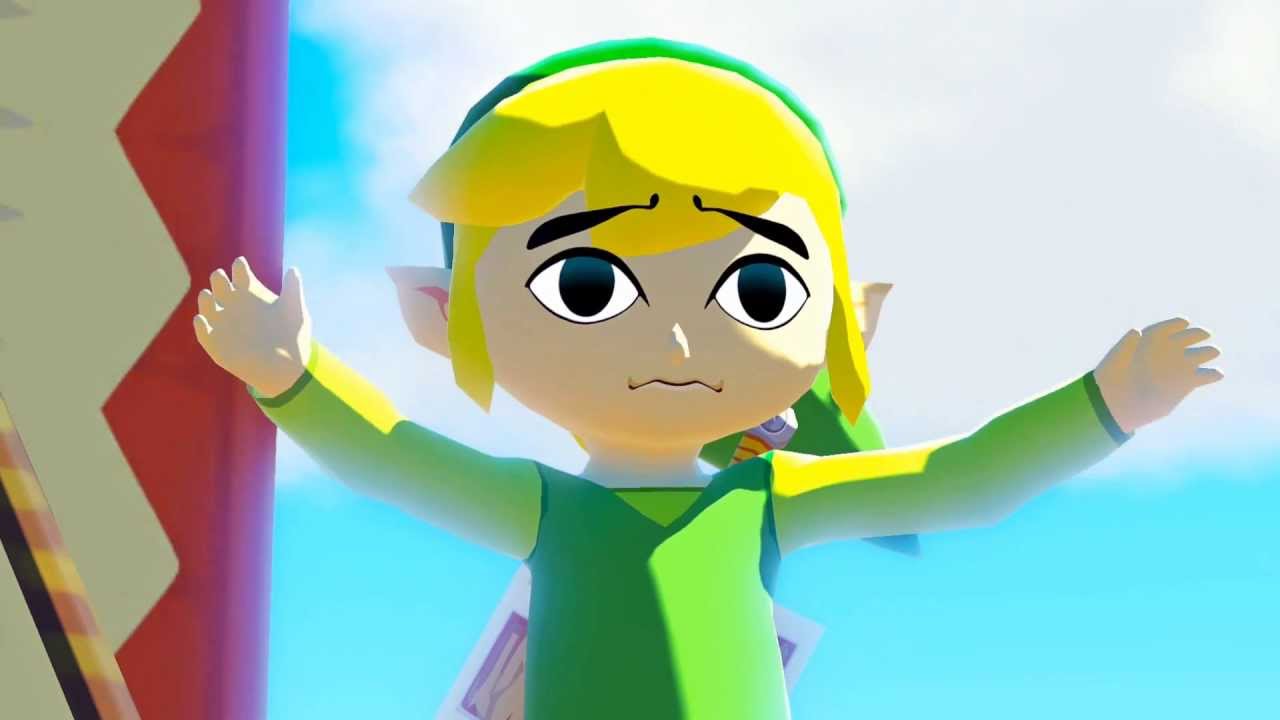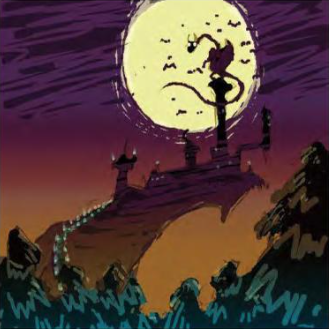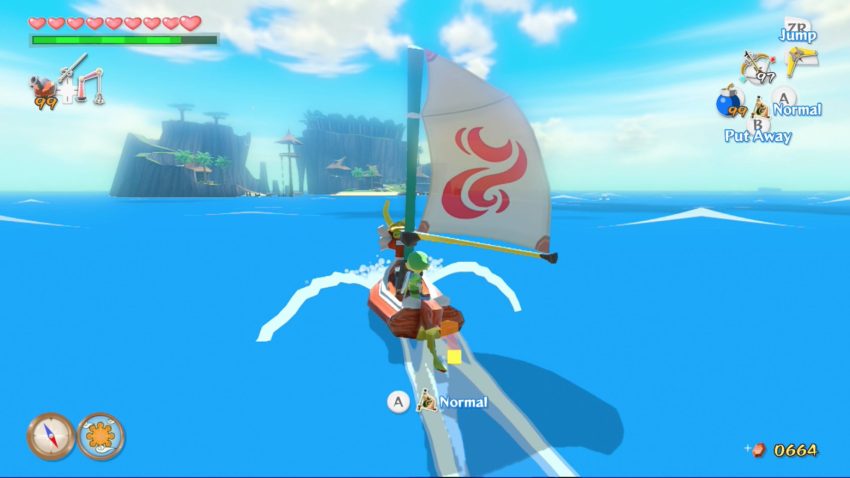The Legend of Zelda: The Wind Waker – An Ocean of Missed Potential
Posted on August 25 2023 by Nick Miller

This year marks the 20th anniversary for The Legend of Zelda: The Wind Waker, the GameCube’s first original Zelda title. Though the game initially sparked criticism for its cartoony art style, it has since received overwhelmingly positive reception and has gone down as one of the landmark titles for the Zelda series, a timeless classic. The Wind Waker presented a major shift from series norms by taking the classic Zelda formula we had seen in games like Ocarina of Time, A Link to the Past, and the Oracle titles to the high seas, or the Great Sea to be more specific. Gone are the sprawling fields and soaring mountains, replaced with a vast ocean, dotted with islands great and small.
While The Wind Waker certainly delivers on its promise of a “vast” and “sprawling world” to explore, it falls short when it comes to the amount of interesting content that populates the Great Sea. Likewise, there are many aspects of the game, particularly in the game’s second and third acts, that feel half-baked or at the very least miss their potential. The game has a knack for setting up some exciting concepts like the sunken Hyrule and the Triforce hunt, yet it fumbles the execution of many of those ideas. I want to explore some of these ideas and show how the potential was there for them to be greater than what they are now.
The Dead Sea
The Wind Waker’s Great Sea is laid out on a 7×7 grid, with one island, or cluster of islands, assigned to each square. This gives the game a total of 49 points of interest. How much of that is actually worthwhile, though? Of these 49 locations, six are reefs, three are Triangle Islands, and six are Fairy Fountains. The reefs are all the same, featuring a sea battle and a treasure chest. The Triangle Islands are empty, except for a single statue on each that are used once in the main quest. The Fairy Fountains, while they do provide useful upgrades, are single-visit islands as well.
This leaves the map feeling a bit more barren, with only 34 islands of interest. Of these, six have dungeons, four have villages, and one is Tingle Island. Though many of the islands are interesting, having mini dungeons or unique themes, most you will only visit once and never return. If these islands could do more to warrant repeat visits, that alone could be enough to justify the sweeping scale of the Great Sea. Unfortunately, as it is now, I don’t see that being the case. On my own playthroughs, I sail right passed most islands, because few are interesting enough to justify the time spent there.

Concept art, detailed in Hyrule Historia, shows some of the ideas and islands that were cut from The Wind Waker. Two unused islands are shown, one called Stovepipe Island and another modeled after a GameCube. The exclusion of the GameCube island certainly isn’t a huge loss, but Stovepipe Island appears to have a large village and a dungeon. The concept art also shows a Goron-like race inhabiting the island, whereas the only Gorons we got in The Wind Waker were the traders. Why this island in particular didn’t make the cut is a mystery. It’s possible that with Dragon Roost Island and Fire Mountain both featuring volcanoes, a third may have felt like overkill. Regardless, a new settlement out on the Great Sea would be a welcomed addition and would do wonders to make the sea feel more lived-in.

Hyrule Historia also shows other races of island-dwellers that were considered for the game, one being covered in hair and the other being pea-like creatures who dwelt in trees. The latter may have contributed to the development of Koroks while the former may have been an inspiration for the Anouki Tribe of Phantom Hourglass. This early concept art shows that more content was being considered for The Wind Waker‘s Great Sea. Had the Great Sea had more interesting content on its islands, or had more islands, the full scope of its vision for exploration could have been realized.
Admittedly, however, the lack of content on the sea may be a result of hardware limitations on the GameCube. The Legend of Zelda Encyclopedia explains:
“To make transitions seamless between sailing and landfall, developers experimented with the sizes of both islands and the sea itself. The GameCube would not load fast enough if the islands were too large, placed too close together, or if Link approached them too quickly.”
Despite that fact, islands could have been populated with more content, the content that is already there could have been altered to be more interesting, or the Great Sea could have been rearranged to accommodate a few more large islands. Series producer Eiji Aonuma has even verified that two dungeons were cut from The Wind Waker, so we know that more content was in the works. Anything that could be added to the Great Sea would be an improvement over what we have now. Better yet, content could have been expanded below the surface.
The Kingdom Beneath the Waves
After collecting the three Goddess Pearls and ascending the Goddess Tower, Link ventures to the Hyrule of Ocarina of Time, frozen in time beneath the surface of the Great Sea. In most traditional Zelda games, this moment would mark a turning point in the game. After three dungeons in A Link to the Past, you enter the Dark World. After three dungeons in Ocarina of Time, you become an adult. As such, one would think that descending to old Hyrule would mark an equally significant change. With that in mind, the player naturally contemplates The Wind Waker‘s “twist” as they begin to explore Hyrule Castle. That change, however, never really comes. Sure, the ocean opens up to full exploration, but we already knew that was going to happen, so it doesn’t feel like the game-changing event that it should have been.

Now that old Hyrule is on the table, it would make sense that this would be The Wind Waker‘s Dark World; its Adult Link Hyrule. Unfortunately, this is not the case. All we really get to see of sunken Hyrule in-game is Hyrule Castle, Ganon’s tower, and the inside of two dungeons that we enter from the surface. This is undoubtedly a missed opportunity.
Early artwork for the game, suggests that more was being considered for this undersea world. One such image shows a castle keep, reminiscent of Dracula’s castle from Castlevania, guarded by a dragon. The sprawling forest at the base of the cliff suggests that this area is not on the Great Sea but in Hyrule. Another piece of concept art shows a warp system where Link would grab onto a fisherman’s hook to be drawn to the surface. The fact that a warp system like this was being considered shows that multiple areas were intended for the land beneath the surface, possibly in a similar manner to Skyward Sword.
In The Legend of Zelda: Skyward Sword, the setup was very similar to The Wind Waker, with a land of sky islands scattered among the clouds, and a land below, called The Surface (what would later become Hyrule). Link could travel to different regions on The Surface via openings in the clouds. These regions weren’t connected so Link would have to return to The Sky, fly to another opening, and descend back down to The Surface.
The parallels between this and The Wind Waker are obvious. The Great Sea, even as it is now, could very easily act as a hub world, just as The Sky did. The different regions of Hyrule could exist in isolated pockets to reduce the hardware demands associated with an interconnected world, with access points at the fisherman’s perches to act as bridges between the two worlds. To move from area to area, Link would only need to ride the fisherman’s hook up to the surface, sail to another access point, and descend again. Perhaps then we’d get to visit the ruins of Kakariko Village at the base of Dragon Roost Island, the village well being the location of the Earth Temple with its catacombs full of ReDeads — a call-back to Ocarina of Time’s Bottom of the Well. Perhaps we’d get to explore areas like Lon Lon Ranch or even the Gerudo Desert to learn the history of Ganondorf and the lore of the Gerudo people.
Just speculating like this on things that could have been included and fantasizing about the adventures you’d have there is almost more exciting than actually visiting the sunken Hyrule because the content is so bare bones. Now, I don’t want to compare The Wind Waker to Skyward Sword too critically because The Wind Waker is an older game and hindsight is 20/20, so it’s not fair to say it should live up to the standards of a newer game. The fact, however, that a more expansive old Hyrule was considered shows that the potential was there to be much greater than what it is now, and doing that should be within the hardware capabilities of the GameCube.
Regardless, getting to explore this world would have not only expanded the game’s content in a meaningful way but it would have given players that traditional Zelda gameplay shift, as well as giving the developers opportunities to include some huge emotional and nostalgic moments as players explore the Hyrule of Ocarina of Time, now in ruins beneath the sea. What we got instead just feels like a tease. Yes, it’s incredible that we visit Hyrule, but the game does nothing with it, and we hardly see any of it. This is just another example of The Wind Waker teeing up an awesome concept and then stumbling on the follow-through.

A Triforce Treasure Hunt
In The Wind Waker‘s third act, players are instructed to hunt for shards of the Triforce of Courage. This is an amazing prospect! It only makes sense that in a game about pirates on the high sea, at some point you’d go on a grand treasure hunt. Other IPs like the Uncharted series, Indiana Jones, and The Goonies feature outstanding treasure hunts that have multiple layers. They’re tales of intrigue that lead our heroes chasing clues that build off of one another, taking them through death-defying traps and puzzles. The Triforce hunt does not share these qualities.
Whenever I play through The Wind Waker, the Triforce hunt is usually where I drop off, and I know I’m not alone in that. If there is one word that could describe this segment, it’s “tedious.” Let me explain. In order to find the Triforce, you must first acquire the In-credible Chart from Tingle. This will cost you 201 Rupees. Of course, your starter wallet only carries 200 Rupees, so you have to upgrade your wallet if you haven’t already. The In-credible Chart shows you the locations of the eight Triforce Charts, which are haphazardly scattered across the Great Sea, including one in the basement of your house which requires you to complete a seemingly unrelated side quest for the teacher on Windfall Island. Each Triforce Chart directs you towards a Triforce Shard, though you need to get them deciphered by Tingle in order to read them. He charges you 398 Rupees a piece which means you need to spend a whopping 3,198 rupees over the course of this quest in addition to the 201 Rupees you spent earlier. I know plots centered around treasure hunts often carry the theme that the price you pay for the hunt outweighs the worth of the prize, but I didn’t expect it to be so literal here.
So, after Tingle nickel-and-dimes you to death, the proper hunt for the Triforce Shards begins. The Shards have all been tossed unceremoniously to the bottom of the ocean so finding them is as simple as sailing to the map marker and hoisting them up with your grappling hook. The game doesn’t really do anything to make these moments feel important, there’s no pomp or excitement around them. You just pull them up off the ocean floor like you’ve done with every other treasure and that’s it, which is a shame. A full-on treasure hunt on the high seas should have been the highlight of the journey and a proper capstone on your adventure before endgame events, but it just isn’t. Everything about it feels half-baked, and, as such, it just comes across as filler content to pad out the game’s length. Like many other things in The Wind Waker, this was a concept with so much potential that just fell flat.

A Timeless Classic
While there are certainly other ways in which The Wind Waker could be improved, I don’t want this to turn into a bash-fest. I actually really like The Wind Waker and have an incredible fondness for it, even if I feel that it has a habit of setting up cool ideas and then failing to deliver on them. Despite these drawbacks, The Legend of Zelda: The Wind Waker is still a tremendous game, a timeless classic; and the reason for that, I believe, is authenticity.
You see, The Wind Waker was the last thing anyone wanted at the time of its release. Coming off of the heels of gritty games like Ocarina of Time and Majora’s Mask, fans were expecting another dark, somewhat realistic game. The Spaceworld 2000 tech demo, which showed Ocarina of Time‘s Link and Ganondorf fighting in those glorious GameCube graphics, got fans buzzing and seemed to confirm that the next Zelda would carryover that tone. What we got however was nothing like what the fans had expected, and that’s a good thing.
Nintendo could have played it safe and made Ocarina of Time 2 and it would have been a massive success, but they didn’t. Instead, we got a game that was original and creative, light-hearted and cartoony. While the plot eventually gets around to saving the world, it stood in the face of nearly every Zelda that came before it by starting with a kid who was just trying to rescue his sister. This was a deeply personal tale about a young boy learning to be a hero instead of an adventure of destiny with world-ending stakes from the word go. As such, the player will naturally form a more personal attachment to the story and the characters of The Wind Waker than they would with many of the Zelda games prior, with the exception of maybe Majora’s Mask which also started with a more personal tone, though not in quite the same way.
This connection the players form with the game is helped in part by the art style, which allows characters, especially Link and Tetra, to show a wide range of expressions so that the player knows exactly what they are thinking or feeling at any given moment. The art style itself is bright and vibrant, with a cartoon style that has aged better than almost any other game of its time. So, what the game lacked in grandeur it more than made up in personality.

It’s worth mentioning that The Wind Waker’s HD remaster for the Wii U fixes some of the aforementioned problems, or at least puts a Band-Aid on them. The Triforce hunt is shortened significantly, and your base wallet size is increased to remove some of the tediousness from this quest. This doesn’t make the Triforce hunt any more intriguing, but it does make it less painful. The addition of the Swift Sail also cuts down on travel time, which helps the Great Sea feel smaller, making the player more likely to venture to those small islands as exploring isn’t as much of a time sink.
I find it curious however that most of the quality-of-life improvements involve shortening content or removing it altogether. It makes me wonder how that reflects on the developers’ attitudes towards the original game. It would have been nice to see more added content in addition to what was removed, like those two cut dungeons or a more interesting Triforce quest; but being that it’s only a remaster, I understand the hesitation in changing too much so as to keep things true to the GameCube version. Regardless, if you’re going to play The Wind Waker, the Wii U remaster is definitely the way to do it.
Conclusion
The Wind Waker is game that took risks, that challenged what it meant to be a Zelda game. It’s a game that is authentically itself, a game that knows what it is and that isn’t ashamed to admit it. For that, it deserves its status as a timeless classic and a landmark Zelda title. However, it’s hard to look past the obvious filler in the Triforce hunt, the lackluster old Hyrule, the cut content from the Great Sea, and more. There are so many great ideas in this game that it just never follows through on. As such, The Wind Waker is a game that was more ambitious than it had the means to fulfil. But you know how the old saying goes: “Shoot for the moon. Even if you miss, you’ll land among the stars.”
So, what do you think? Do you feel The Wind Waker missed the mark in some places? What do you think about the game’s cut content? I want to hear what your thoughts in the comments.

Nick is a writer for Zelda Dungeon and a longtime fan of the Zelda franchise. In his free time, he enjoys fishing, archery, skateboarding, and some good ol’ fashioned family time. He’s an advocate for physical media and an avid video game collector. His favorite Zelda game is Ocarina of Time, though Breath of the Wild and the Link’s Awakening remake are close contenders.



